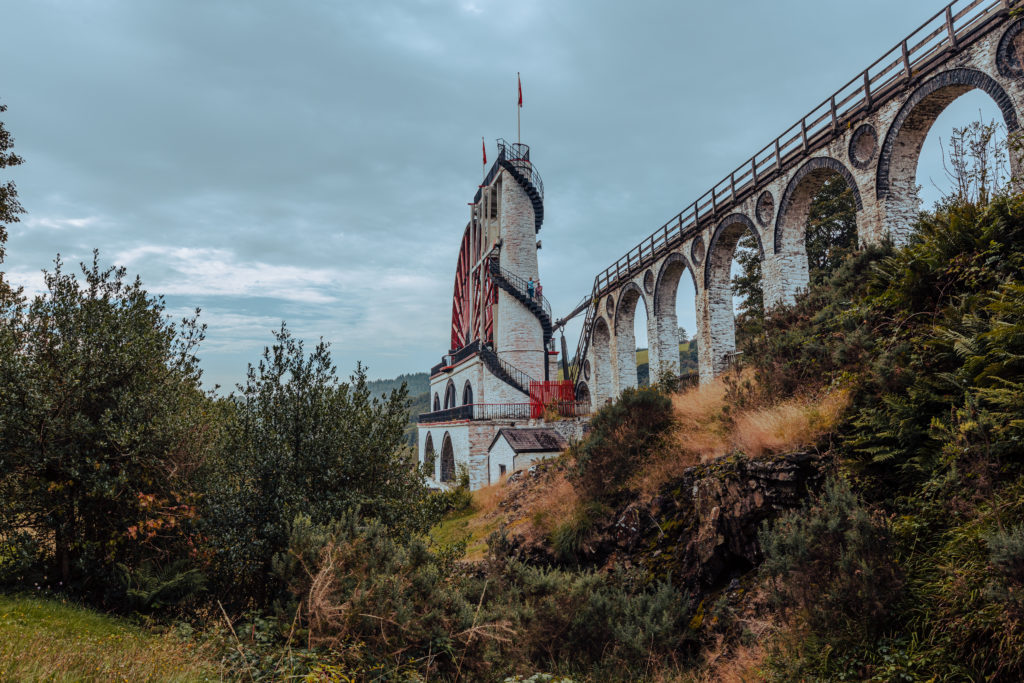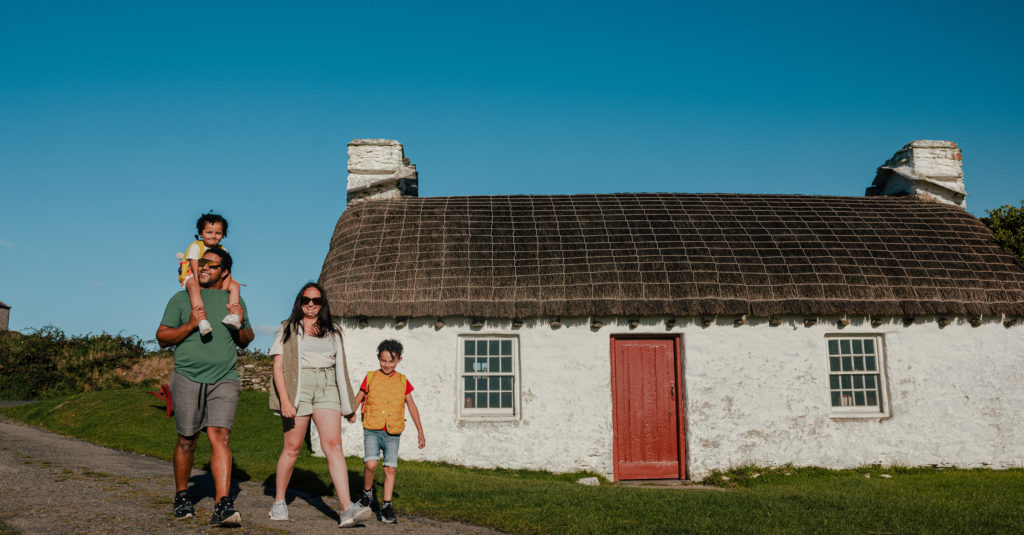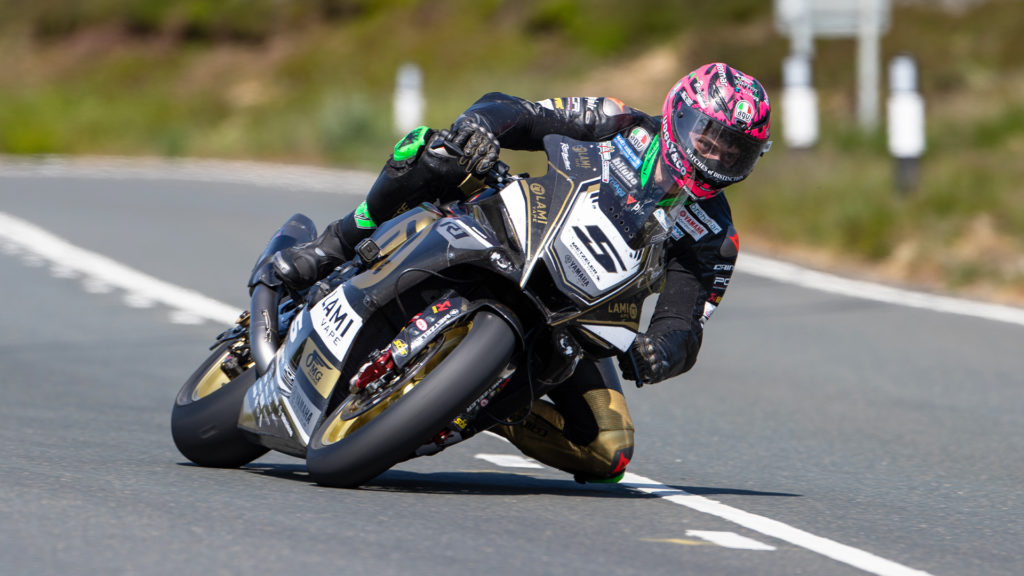From Little People to Cursed Stones, the Isle of Man is steeped in similar folklore to Ireland, which - along with its sweeping bays, green hills and welcoming people - makes it a great place for an offseason break. JAMES RUDDY reports
 Heartstopping TT race action
Heartstopping TT race actionWHEN Dún Laoghaire-born music and political icon Sir Bob Geldof took his rock band to the Isle of Man two years ago, he faced offending a local superstition dating back centuries.
In Manx folklore, the word rat has long been erased from daily life due to some long-forgotten aversion to the rodents - thought to have originated among its highly superstitious fishermen.
Hence, Geldof’s Boomtown Rats were renamed the Boomtown Longtails for their gig in the capital, Douglas, in the early summer of 2022.
As an alternative, they could have been known as the Boomtown R..s, which is the only other acceptable use of the offending word among the island’s 83,000 residents.
And they are deadly serious about such matters which are buried as deeply in their DNA as their fierce pride in their ancient Manx Gaelic and their world-famous kippers.
During a few wintry days on the verdant lump of rock (just 32 miles by 14) in the absolute windy middle of the Irish Sea, I became enthralled by these enterprising and generous people who can point to roots dating back 8500 years ago after the Ice Age retreated and settlers arrived, probably from Ireland.
Their psyche has been shaped by those bitter winds, a vital can-do nature and by countless invaders and overlords – from the Vikings to the British and Scottish – all have left their indelible mark on everything, from the exquisite Scandi jewels in their museums to the Georgian and Victorian mansions that line their gentile beach-ringed resorts, from Port Erin and sleepy Castletown in the south to Peel and Ramsey on the west and east coasts.
 Laxey waterwheel in full glory
Laxey waterwheel in full gloryTHERE IS so much for the visitor to explore, from the world’s biggest waterwheel, at Laxey, medieval castles galore, including those at Rushen and Peel, as well as more modern presentations of a vivid past, like the superb House of Manannan interactive museum (named after the Irish Sea God ‘Son of the Sea’ from which the island’s name derives).
Around the coast are untouched beaches aplenty between rugged coves and lofty sea cliffs, ringing a green landscape, dotted with glens and forests and which bubbles up with mighty hills. The biggest, Snaefell, at 2,036 feet, provides panoramic views of England, Scotland, Ireland and Wales when the sky is blue.
And blue it often is, as I discovered on one gloriously sunny winter day when the steel grey skies lifted, the fierce Force 8 gale departed, and I savoured a gloriously scenic trip on the island’s coast-hugging steam railway, followed by ‘a proper Manx’ lunch of waist-snapping goodies at the Fynoderee Distillery in pretty Ramsey.
Between hikes and cycling around the huge swathes of virtually empty countryside, the island offers visitors plenty of other outdoor activities – from paddle-boarding to nature watching. Indoors, there are stacks of great pubs and eateries serving food proudly sourced locally and even foraged by chefs from the nearby fields and beaches.
 James bakes hist first Irish Soda bread at the Cook Shack
James bakes hist first Irish Soda bread at the Cook ShackYOU CAN even try your hand – as I did by baking my first-ever Irish soda bread – at the hugely popular Cook Shack run by award-winning master-cook Georgie Revill at her specialist kitchen in Bride, on the island’s northern-most tip.
Her ingredients are almost all sourced from local suppliers, including mutton and lamb meat from the ancient, Viking, four-horned Manx Loaghtan sheep, which has a surprisingly intense flavour and is famed for its low cholesterol and fat rating.
Nature’s wonders are to be found at every turn, including skies teeming with such beauties as Manx Shearwaters and Black Guillemots, and fields brimming with brown hares, shrews and polecats.
All of which ties in with the island’s boast to being the world’s only complete nation to be declared a UNESCO Biosphere in recognition of its extraordinary natural environment, vibrant culture, unique heritage and close-knit community.
Which means islanders and visitors swim in ultra-clean seas rich in dolphins, basking sharks and seals, as well as living in carefully nurtured landscapes, eating the purest of food and enjoying the best life this world can offer.
With not a piece of litter or graffiti to be seen, it’s no wonder there is so much pride in an island that retains its independence fiercely within the UK family – just like Jersey and Guernsey – as a self-governing British Crown Dependency with its own currency and the Tynwald, the oldest continuous parliament in the world (dating from 979).
 Manx thatched cottages display hints of Irish roots
Manx thatched cottages display hints of Irish rootsTHEY LIKE to recount the story of how the island was created when Irish giant Finn MacCool threw a piece of Antrim at the retreating Red Man, but missed and it landed in the middle of the Sea.
It’s all about doing your own thing: like the roundel (an oval-shaped roundabout) on Douglas seafront where I discovered, local drivers don’t stop); or the rare speed limits (most roads don’t have any); or the wallabies who have thrived in the wilds since their wildlife park escape.
After all, just like Ireland, it’s all about the magic and the mystery, as George Waldron wrote in 1731: “There is not a creek or cranny in this island, but that is haunted with fairies or ghosts.”
 A TT rider in inch-perfect race action
A TT rider in inch-perfect race actionTT Races Panel
Apart from its reputation as a tax haven, the Isle of Man is synonymous with the annual TT Races, which welcome over 45,000 leather-clad motorcycle fans to a fortnight of unique open road competition.
To those who are unfamiliar, the races appear like madness on two wheels with speeds of up to 200 miles an hour along the course of over 37 miles through stonewall-lined country lanes, packed with humped-back bridges and tight bends.
There have been 269 deaths since the TT (Tourist Trophy) began in 1907, including riders and spectators caught up in the carnage.
With bikes becoming faster and more powerful, there have been countless attempts to reduce the dangers during the practice and race sessions that run at the end of May and beginning of June, which attract competitors from across the globe.
Visitors can book trike tours of the course with an in-helmet commentary from your expert driver. I took a fascinating taxi tour with an experienced guide, who pointed out the most dangerous spots for accidents, as well as the straights where machines pass like bullets inches away.
One evening I attended a session at the Victory café where Milky Quayle, a local winner, talked me through a video of a high-speed ride round the course.
Milky, a local man, who is a multiple TT winner, has also crashed four times, the last time, incurring serious injuries, after which he ended his TT race career and took up training of would-be competitors instead.
“You have to use your head not our heart,” he said.
I won’t be applying any time soon!
Events and activities highlights
Shennaghys Jiu - Celtic Festival – March 28-31
CAMRA Isle of Man Beer & Cider Festival — April 11-13
Manx Music, Speech & Dance Festival at The Guild — April 27 – May 4
Isle of Man TT – May 27- June 8
Tynwald Day –July 5
Yn Chruinnaght Celtic Gathering — July 22-28
World Championship Viking Longboat Races – July 20
Isle of Man Food & Drink Festival –September 14-15
Isle of Man Festival of Motoring –September 19-22
Walk the Isle of Man - Walking Festival September 22-27
Manx Litfest – September 24-29
Factfile
For full holiday planning information go to www.visitisleofman.com
Getting there
Flights are available from several UK and Irish routes, some taking less than 30 minutes.
Ferries sail from the North-West of England all season and from the East coast of Ireland in summer.
The Steam Packet Company’s brand-new Manxman ferry, from Heysham, has high-end facilities for up to 948 passengers, on foot and with vehicles, on the 3 hours and 45 minute voyage. Check for times at www.steam-packet.com
All photos courtesy of Visit Isle of Man

